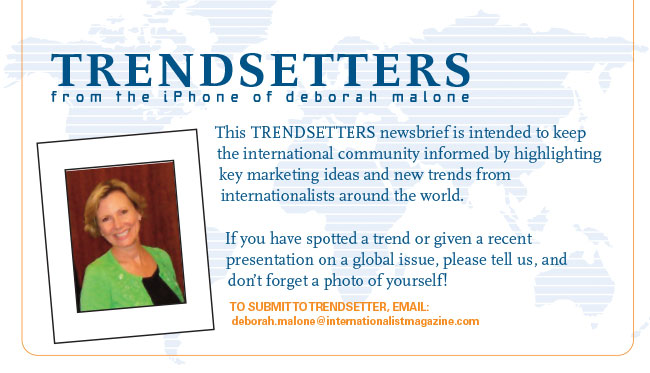

Darren Woolley
Trendsetters: Darren Woolley Outlines 5 Ways to Insure that Agency Incentive Payments Work Fairly & Beneficially
Agency incentive compensation has increasingly become a hot topic, and Darren Woolley, CEO of TrinityP3 Marketing Management Consultants and the Chairman of the Australian Marketing Institute, is an advocate for moving agency compensation from the popular cost-based model to a value-based approach. "One of the cornerstones of the value-based approach," he says, "is performance or incentive-based agency compensation."
For the last ten years, he has worked with advertisers and agencies who have initially found it difficult to move to a new mode of compensation. However, he admits, "For those advertisers who have achieved this, the rewards have been innumerable."
Woolley cites how one global marketer aligned its creative and media agencies to the CMO's financial performance. Not only did this establish the size of the incentive pool, but the agencies' share was determined by a collaborative score created by the marketing stakeholders and the other agencies on the roster. The result was a new commitment by all agencies to the shared performance metrics of the CMO and his team.
Darren Woolley believes there are five main obstacles to implementing a successful incentive or performance-based compensation program:
1. Agencies are hesitant to link compensation to performance.
2. Agreement on performance criteria often proves to be difficult.
3. The scope of the incentive is often too narrow.
4. It is difficult to budget the payment.
5. Disputes over the payment of the incentive.
Agencies are hesitant to link compensation to performance
Often agencies will shy away from sales and profit measures, because they quite rightly say they do not control all the steps and channels of the sales process such as retail, call centers and sales teams.
The fact is that all parties involved make a contribution or influence a result. Therefore the level of influence and the associated risk must be taken into account when calculating the upside and downside of the incentive payment.
Woolley explains, "For many of our direct response advertisers, where sales are directly tracked through the website or the call center, we have the total agency fee incentivized and paid on leads and sales. In one case, the new compensation model resulted in a 250% increase in sales with no corresponding increase in media or creative other than the additional fees paid as an incentive."
Agreement on performance criteria often proves difficult
Performance criteria should be achievable. He says, "We were working with a frozen food company who proposed a sales growth bonus for the agency where they could achieve a 20% lift in the agency fees if the company achieved their double-digit objective. However, the agency pointed out that the sales objective was the same for the past 3 years--and it was never achieved."
Avoid formulas that are far too complex. "A consumer goods company had a formula that measured sixteen different performance criteria," related Woolley. "In the contract, the methodology was outlined over four pages, but in the three years of the contract the incentive was never paid as no one had the time or the ability to calculate the result."
Be sure that the measurement process does not become more expensive than the fee itself. Darren Woolley cites an alcoholic beverages company that undertook research to specifically attribute the contribution of the agencies' work to the result--only to find that the cost of this research was more than double the incentive fee being paid!
He adds, "In our experience, having the metric that the marketing team is measured against, shared with all of the key agencies, is ideal. These are usually sales and revenue-focused and help align the agencies' efforts to those of the marketing team."
The scope of the incentive is too narrow
To encourage change or incentivize performance, there needs to be a carrot-- and quite a sizeable carrot. According to Woolley, "Too often we see performance bonuses or incentives that are really relatively small in regard to the overall remuneration proposal."
For example, the Coca-Cola Value Based Compensation program includes a 30% incentive for agencies. "In some cases," he says, "we have had 50% bonus or incentives in place where the agency earns an acceptable margin on past performance and then there are stretch objectives. Of course where the agency is paid on leads or sales the upside is only limited by the number of sales."
It proves difficult to budget the payment
Darren Woolley admits that the difficulty faced by many marketers is the inability to budget for an incentive payment, especially if it is a substantial amount.
He says, "We have found the best solution is to discuss with the CFO the concept of setting up an agency incentive payment pool that is funded as a cost of goods sold. In this way, the incentive is therefore no longer funded from the marketing budget, but is funded from the sales outcomes achieved. This is an interesting concept for many CFOs who identify a greater level of accountability in the approach.
Disputes over the payment of the incentive
Woolley acknowledges that he has seen a number of agreements fail in the first year when the marketers have reneged on the incentive payment, because the results were too positive and the payment too large. "In these situations, the failure to pay had a catastrophic impact on the trust between the agencies and the marketing team."
Certainly, fear and greed are obstacles to true performance. "Our experience has shown that the major issues that arise when implementing an incentive-based compensation can be overcome through mature and informed negotiations. However, many advertiser and agency relationships have become damaged through years of cost pressure and power imbalances. Effectively implementing an incentive-based model requires shared objectives and mutual trust."
Darren Woolley is an ex-research scientist and advertising Creative Director; he applies science and creativity to solve the structural and processes challenges facing marketing and advertising. His company, TrinityP3 Marketing Management Consultants, focuses on marketing and supplier structure and roster management, agency compensation and relationship management in Asia Pacific. More than 150,000 marketing and advertising professionals read the TrinityP3 company blog where TrinityP3 consultants share the latest industry trends, insights and case studies from their work with companies including many of the top 100 advertisers in the region. TrinityP3 has also created many online resources and solutions including the Resource Rate Calculator Business App, Ad Cost Checker online rate benchmarking and the Evlau8ing collaboration measurement and management system.

